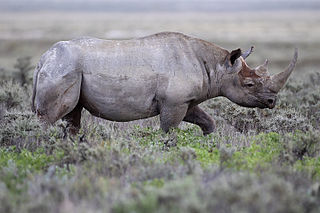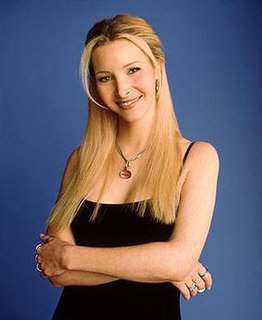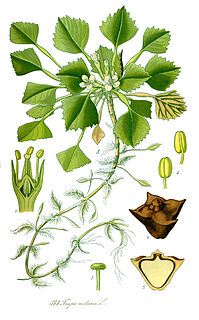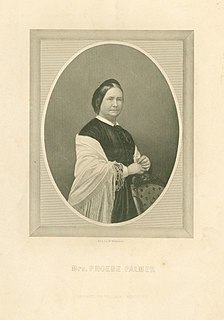Related Research Articles

Phoebe is an irregular satellite of Saturn with a mean diameter of 213 km (132 mi). It was discovered by William Henry Pickering on March 18, 1899 from photographic plates that had been taken starting on 16 August 1898 at the Boyden Station of the Carmen Alto Observatory near Arequipa, Peru, by DeLisle Stewart. It was the first satellite to be discovered photographically.

The black rhinoceros or hook-lipped rhinoceros is a species of rhinoceros, native to eastern and southern Africa including Angola, Botswana, Kenya, Malawi, Mozambique, Namibia, South Africa, Eswatini, Tanzania, Zambia, and Zimbabwe. Although the rhinoceros is referred to as black, its colours vary from brown to grey.

In ancient Greek religion, Phoebe was one of the first generation of Titans, who were one set of sons and daughters of Uranus and Gaia. She was the grandmother of the sun god Apollo, the moon goddess Artemis, and the witchcraft goddess Hecate. She was, like Artemis, identified by Roman poets with the Roman moon goddess Diana. Phoebe means "bright" but is functionally only a name; in mythology, the role of moon goddess is fulfilled by other deities as her grandchildren inherit her name.

Phoebe Buffay is a character portrayed by Lisa Kudrow, one of the six main characters from the American sitcom Friends, created by David Crane and Marta Kauffman.

Phoebe [Koine Greek: Φοίβη; Latin: Phœbē, Church Slavonic: Фива (Fiva), Armenian: Փիբէին (P̕ibēin)] was a first-century Christian woman mentioned by the Apostle Paul in his Epistle to the Romans, verses 16:1-2. A notable woman in the church of Cenchreae, she was trusted by Paul to deliver his letter to the Romans. Paul refers to her both as a "servant" or "deacon" and as a helper or patron of many. This is the only place in the New Testament where a woman is specifically referred to with these two distinctions. Paul introduces Phoebe as his emissary to the church in Rome and, because they are not acquainted with her, Paul provides them with her credentials.

The water caltrop is any of three extant species of the genus Trapa: Trapa natans, Trapa bicornis and the endangered Trapa rossica. It is also known as buffalo nut, bat nut, devil pod, ling nut, lin kok, ling jow, ling kio nut, mustache nut or singhada.

Phoebe Palmer was a Methodist evangelist and writer who promoted the doctrine of Christian perfection. She is considered one of the founders of the Holiness movement within Methodist Christianity.

The great hornbill, also known as the concave-casqued hornbill, great Indian hornbill or great pied hornbill, is one of the larger members of the hornbill family. It is found in the Indian subcontinent and Southeast Asia. Its impressive size and colour have made it important in many tribal cultures and rituals. The great hornbill is long-lived, living for nearly 50 years in captivity. It is predominantly frugivorous, but is an opportunist and will prey on small mammals, reptiles and birds.

The eastern black rhinoceros is also known as the East African black rhinoceros or eastern hook-lipped rhinoceros. It is a subspecies of the black rhinoceros. Its numbers are very low due to poaching for its horn and it is listed as critically endangered.

Phoebe Jane Elizabeth Tonkin (born 12 July 1989) is an Australian actress and model. She is best known for portraying Cleo Sertori in H2O: Just Add Water, Fiona Maxwell in Tomorrow, When the War Began, Faye Chamberlain in The Secret Circle, and Hayley Marshall in The CW series The Vampire Diaries and its spin-off series The Originals.

The western black rhinoceros or West African black rhinoceros is an extinct subspecies of the black rhinoceros. It was declared extinct by the IUCN in 2011. The western black rhinoceros was believed to have been genetically different from other rhino subspecies. It was once widespread in the savanna of sub-Saharan Africa, but its numbers declined due to poaching. The western black rhinoceros resided primarily in Cameroon, but surveys since 2006 have failed to locate any individuals.

The south-central black rhinoceros or south-central hook-lipped rhinoceros is a subspecies of the black rhinoceros. In keeping with the rules of zoological nomenclature, the south-central black rhinoceros should be known as Diceros bicornis keitloa, a nomen novum. Although it is the most numerous of the black rhino subspecies, it is nevertheless designated as critically endangered on the IUCN’s red list. Like other black rhino subspecies, it has a prehensile lip and lives in savanna habitat.

The south-western black rhinoceros is a subspecies of the black rhinoceros, living in southwestern Africa. It is currently listed as near threatened by the IUCN. The biggest threat towards the subspecies is illegal poaching.

Osmia bicornis, synonym Osmia rufa, is a species of mason bee, and is known as the red mason bee due to its covering of dense gingery hair. It is a solitary bee that nests in holes or stems and is polylectic, meaning it forages pollen from various different flowering plants. These bees can be seen aggregating together and nests in preexisting hollows, choosing not to excavate their own. These bees are not aggressive; they will only sting if handled very roughly and are safe to be closely observed by children. Females only mate once, usually with closely related males. Further, females can determine the sex ratio of their offspring based on their body size, where larger females will invest more in diploid females eggs than small bees. These bees also have trichromatic colour vision and are important pollinators in agriculture.

The southern black rhinoceros or Cape rhinoceros is an extinct subspecies of the black rhinoceros that was once abundant in South Africa from the Cape Province to Transvaal, southern Namibia, and possibly also Lesotho and southern Botswana. It was brought to extinction by excessive hunting and habitat destruction around 1850.

Bicornin is an ellagitannin found in the Myrtales Trapa bicornis and Syzygium aromaticum (clove).

Phoebe Waller-Bridge is an English actress, writer, comedian and television producer. She is best known as the creator, head writer, and star of the BBC situation comedy series Fleabag (2016–2019), which was based on her play of the same name. She was showrunner, head writer and executive producer for the first series of Killing Eve (2018–present), which she adapted for television. Both Fleabag and Killing Eve are highly acclaimed and have been named among the 100 greatest television series of the 21st century by The Guardian, with the former ranked at No. 8 and the latter at No. 30. Time magazine named her one of the 100 most influential people in the world in 2020.
Phoebe is a genus of longhorn beetles of the subfamily Lamiinae, containing the following species:

Phoebe Bridgers is an American singer-songwriter from Los Angeles. She made her solo debut with the studio album Stranger in the Alps (2017), followed by Punisher (2020), which earned Bridgers widespread critical acclaim and four Grammy Award nominations, including Best New Artist.
References
- ↑ BioLib.cz - Phoebe bicornis. Retrieved on 8 September 2014.